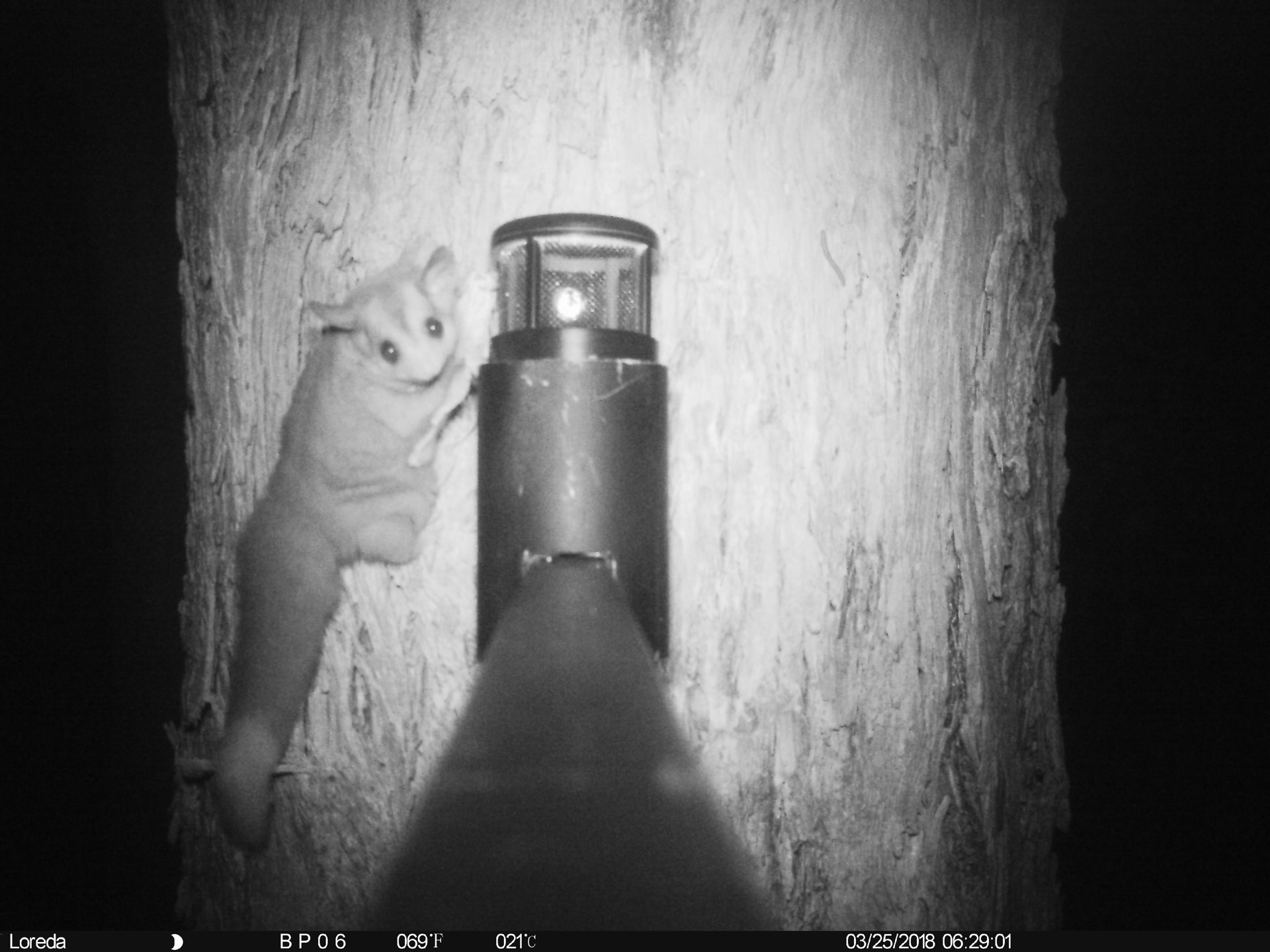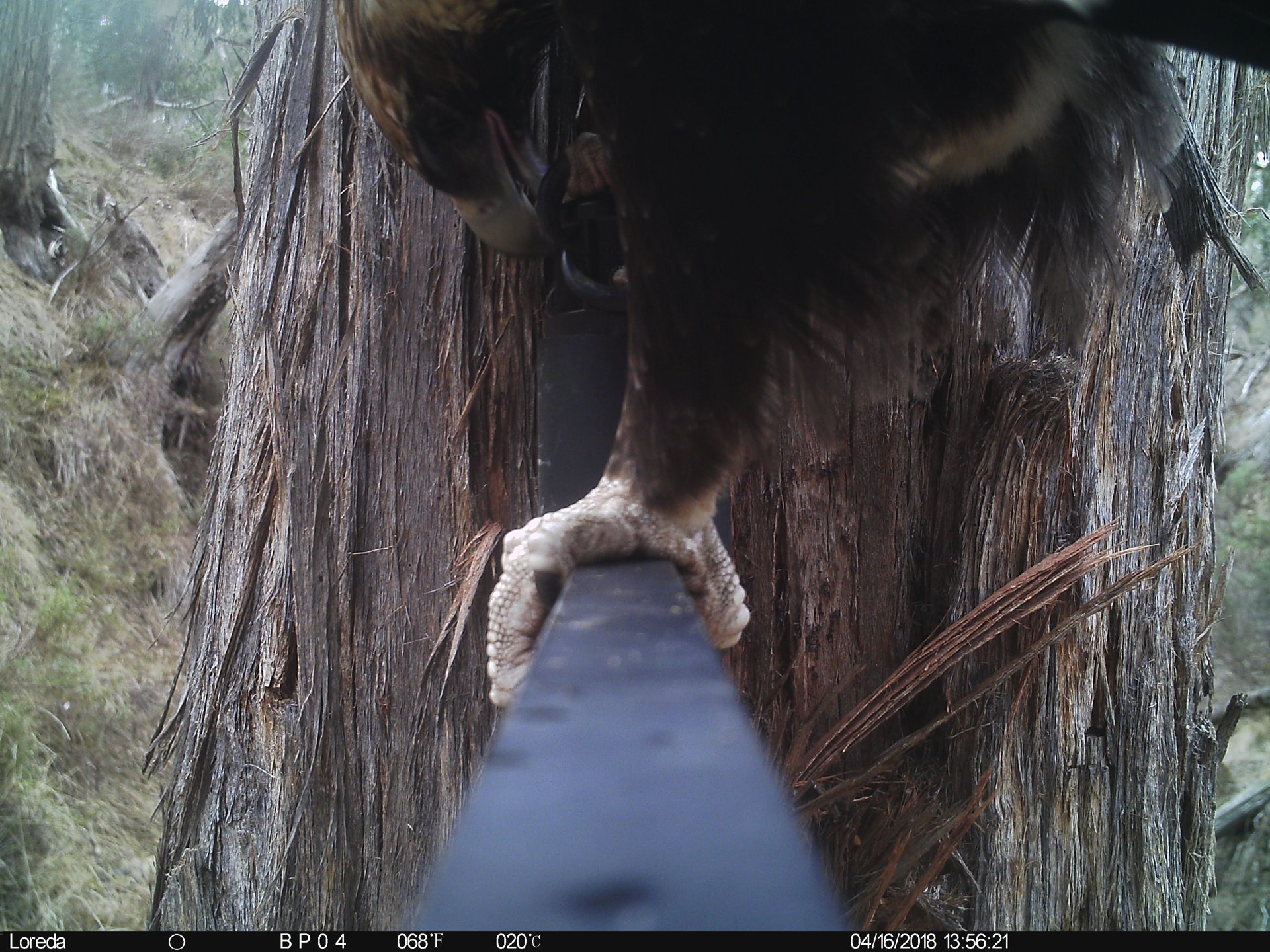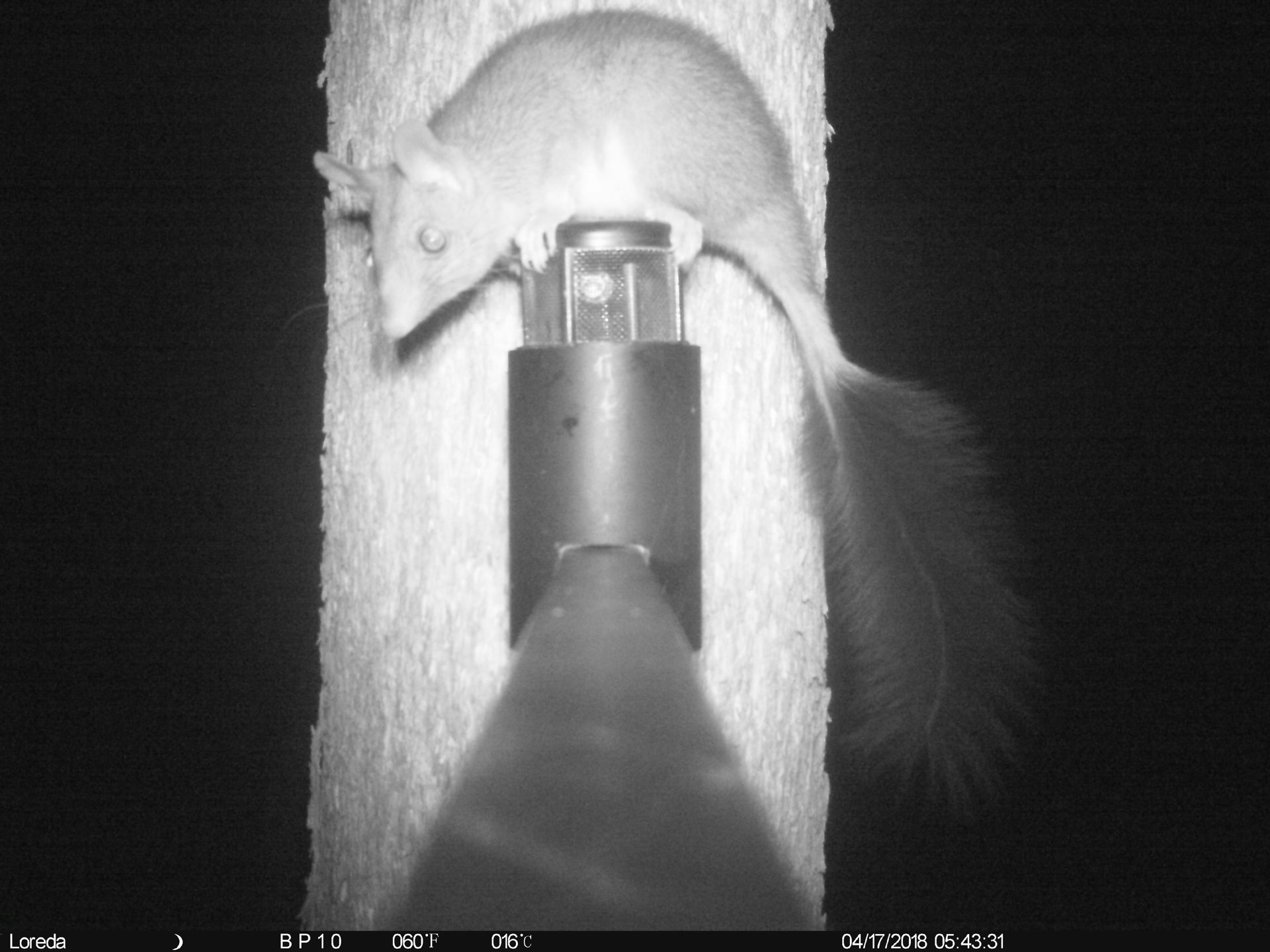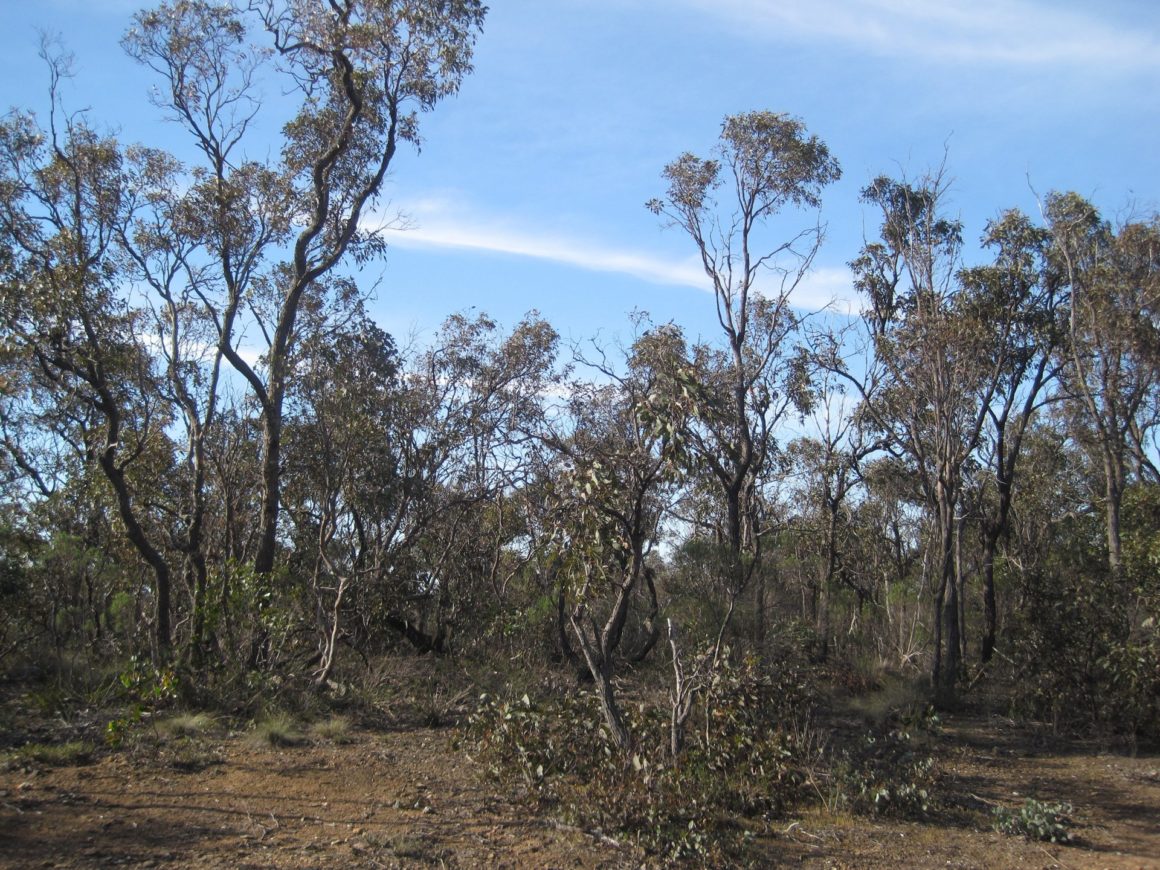For several years, Friends of Brisbane Ranges has been using camera traps to monitor wildlife in Brisbane Ranges National Park. Led by my husband Colin, the project focuses on finding Brush-tailed Phascogales, a species of small carnivorous marsupial which is threatened with extinction. Much of the Brisbane Ranges was burnt in a bushfire in 2006. In some of the driest, rockiest areas, trees are still recovering and there is little groundcover. Controlled burns continue in the park, often in spring when animals are breeding and plants are flowering. In areas with grasses and shrubs, Eastern Grey Kangaroos and Swamp Wallabies are commonly photographed by the camera traps. Common Brushtail Possums, Common Ringtail Possums, Sugar Gliders, Agile Antechinus (a small species of carnivorous marsupial) and echidnas are sometimes recorded, as well as a variety of birds and occasionally non-native rats. Very rarely, a phascogale has its photo taken.

Colin places these motion-sensitive cameras on the ground and in trees to look for wildlife. The movement of animals, attracted to a scented bait, triggers the camera to take a photograph. The cameras usually stay in place for at least three weeks, sufficient time to detect the local inhabitants. However, when cameras were placed in Enfield State Park, located just north-west of the Brisbane Ranges, no animals were detected. In some areas there was complete silence, an eerie lack of bird calls. Perhaps this forest is so altered by people that it no longer provides suitable habitat for much wildlife.
Enfield State Park, south of Ballarat, is an attractive area of bush, at least to human eyes. The trees are fairly uniform in size and the low understorey displays colourful flowers in spring. To wildlife, however, the picture is very different as the forest is burnt regularly. Mature hollow-bearing trees, which provide homes for mammals and birds, are often removed along tracks for human safety before burning takes place. The wood from these trees may be taken away as firewood, so there is a lack of logs and leaf litter which usually provide hiding places and habitat. This can also mean a decrease in the number of insects, a major food source for many mammals and birds.

In the autumn of 2018, we placed cameras on trees along a track in the northern Brisbane Ranges in an area that showed no signs of burning. We started on a dry stony ridge where mature trees only reached about four metres in height and had trunk diametres similar to young trees on better soil. Growing in such a challenging location, we wondered how old they might be. We followed the track, stopping every 500 metres to attach bait and a camera to a tree.
As we descended the hill, the Red Ironbarks with their deeply furrowed dark-grey bark grew taller. Towards the bottom of the hill, where the ground was less stony, the dominant tree species changed to tall Yellow Gums, their smooth trunks striped with creamy yellow and silvery grey bark. The track followed the bottom of the hill, crossing a few steep gullies. The understorey all the way along the track was bushy and we had to weave our way between these plants, and around and over fallen logs to reach our chosen trees. I followed a narrow winding gully for a short distance and found it to be inhabited by hundreds of Common Brown Butterflies resting on the ground or drifting through the air around me.

One month later we retrieved the cameras and the results were spectacular. There were hundreds of photos of Sugar Gliders sniffing at the delicious smelling bait and inquisitively investigating the cameras, each on a metal arm strapped to the tree. Possums were scarce with only one brushtail and one ringtail photographed. A bat flying past had its photo taken, as did numerous birds that foraged close to a camera, or perched on a metal arm. Even a Wedge-tailed Eagle stood on one and used its talons to clean its beak. In the butterfly gully, numerous butterflies had been attracted to the bait and had their photos taken too. Best of all, seven of the ten cameras had been visited by Brush-tailed Phascogales, attracted by the enticing scent of peanut butter, molasses and oatmeal. Each showed us its long pointed nose with a dark stripe down the middle of its face and its beautiful tail covered in black spreading hairs.

It’s interesting to observe the differences in the numbers of species captured by these cameras across a relatively confined area of Victoria – in this case, in the Brisbane Ranges and in Enfield State Park. In this unburnt, relatively undisturbed area of the northern Brisbane Ranges, these cameras have revealed that the Brush-tailed Phascogales are thriving.
All camera trapping was carried out under DELWP permits.
Find out more about the work of Friends of Brisbane Ranges by watching Remember The Wild’s Community Conservationists video.
Banner image courtesy of Wendy Cook.


Leave a Reply